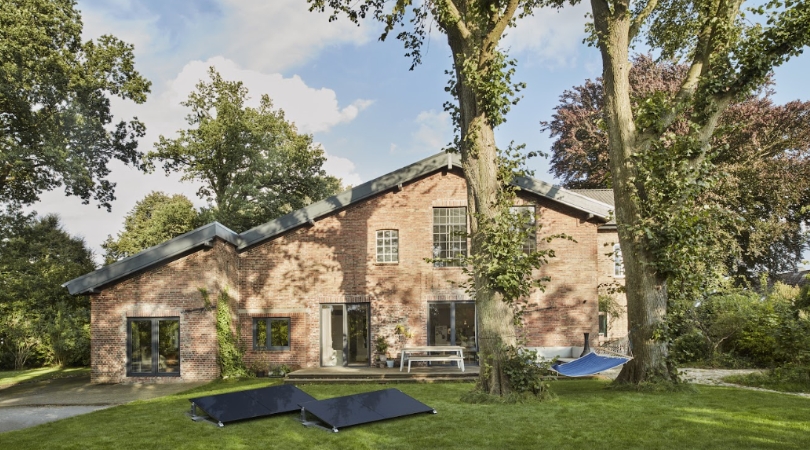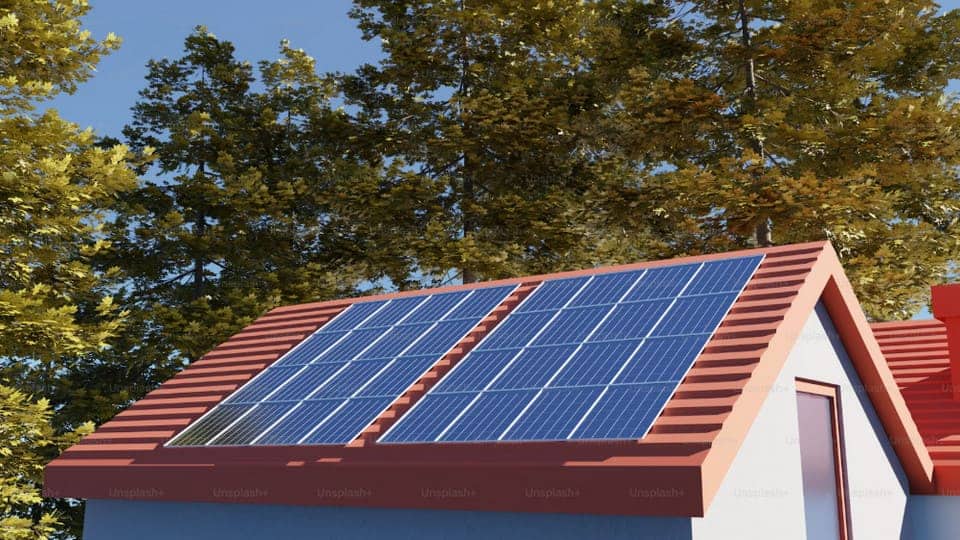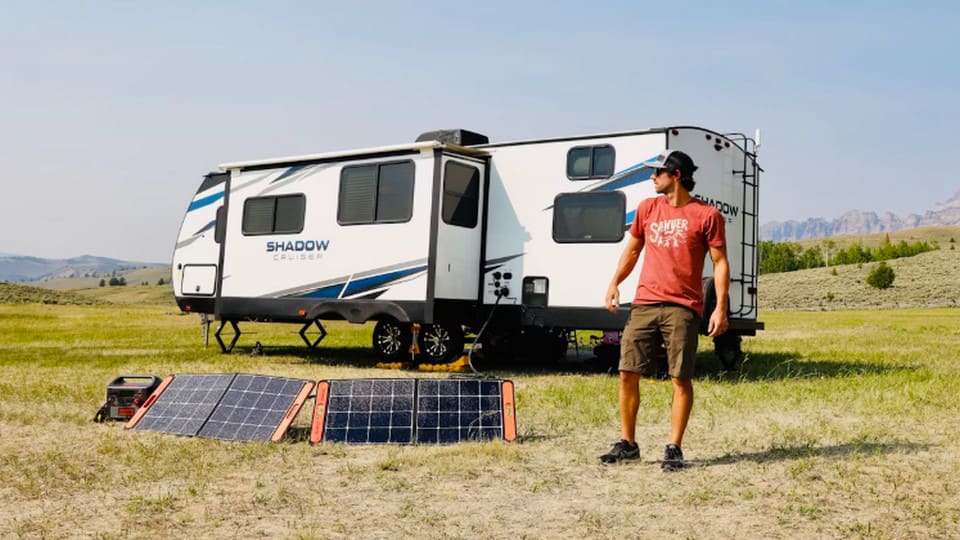Ultimate Guide to Garden Solar Panels: Benefits, Setup & Cost Savings
Solar power has come a long way. It’s no longer just something you see on rooftops. With tech getting better and more people thinking about sustainability, garden solar panels are becoming a popular choice. They’re a smart way to make use of outdoor space while cutting down on electricity costs.
In this guide, we’ll cover what makes garden solar panels worth considering, how to install them, what they might cost, and how much you could actually save. Let’s take a closer look.
Can You Install Solar Panels in Garden?
Before starting, you may be asking: can I install solar panels in garden in the UK? The answer is yes, but it will depend on the location of your home and the size of the installation.
If your home is in a protected area or historic conservation area, you must report to your local council and receive approval before proceeding with the installation.
For most average homes, a permit is not usually required as long as the solar panel installation does not exceed 9 square meters. Above this size, planning permission must be applied for.
If your home is rented, you must obtain written permission from your landlord before installation.
Types of Solar Panels for Gardens
You probably can't wait to get started installing solar panels. But don't hurry; before you do, make sure you do your research to find out which type of solar panels for the garden will work best for your home and outdoor space. A few common types available today include:
1. Ground Mounted Solar Panels
The ground-mounted panels, also known as standalone solar panels, are usually secured to the ground by metal brackets or frames. Each panel occupies approximately 2 square meters.
When installing them, make sure they are at least 5 meters away from the house to avoid blocking the sunlight.
A 15-20 square meter garden can accommodate one to three panels, while fully powering a three-bedroom house usually requires at least 10.

2. Solar Panels on Your Shed/Garden Roof
If you have a garden shed or tool shed, it is also possible to mount solar panels on the roof.
However, the structure of the shed must be strong enough to support the weight of the solar panels.
Wooden structures can usually hold about 6-7 kilograms, and metal structures can hold more than 12 kilograms; whereas standard solar panels usually weigh 18-20 kilograms. Therefore, please make sure to confirm the safety before installation.

3. Portable Solar Panel
The portable solar panel is lighter and suitable for flexible movement. You can always use them in your garden or even take them camping or picnicking.
They are generally between 100 and 200 watts and are suitable for powering small appliances such as cell phones, laptops, or fans.
Portable solar panels are often paired with portable power stations for greater efficiency.

Benefits of Using Solar Power in the Garden
There are many unique advantages to using garden solar panels. Key advantages include:
1. Easier Installation
Installing and removing garden solar panels is easy. Simply place them on an open, unobstructed surface without drilling holes in the roof or complicated construction.
2. Higher Power Generation Efficiency
Compared with rooftop systems, which are limited by angle and direction, ground-mounted solar panels can be tilted freely according to the direction of sunlight to maximize light absorption and enhance power generation efficiency.
3. Easier Maintenance
Rooftop solar panels are usually cumbersome to clean and pose a safety risk, while garden solar panels are easy to access and can be easily cleaned, inspected, or repaired on a regular basis to ensure that the system is always operating efficiently.
How Much Do Garden Solar Panels Cost?
Cost is always one of the biggest concerns. Typically, the cost of installing solar panels in garden ranges between £9,759 and £16,900, depending on the size of the system and the area required for installation.
Two-bedroom: Usually requires around 6 solar panels with a garden area of at least 12 square meters; expect to spend around £9,759.
Three-bedroom: Approximately 10 solar panels are required, with a garden of at least 20 square meters, at a total cost of around £11,700.
Four-bedroom: Approximately 14 solar panels are required, with a footprint of 26 square meters, costing around £15,600.
Five-bedroom: 16 solar panels are likely to be required, with a garden of no less than 30 square meters, costing around £16,900.
Please note that these are estimates only. It is recommended that you contact a professional installer for a more accurate quote and advice based on the size of your home and your electricity needs.
How Much Can You Save on Power Bills with Solar Panels?
Saving money on energy and electricity bills is a big reason for choosing to install garden solar panels. So, how much will you save on your annual electricity bill after installation? And how long will it take to pay for itself? Here is a rough estimate:
1-2 bedroom: Solar system size is approximately 3kW, saving around £485 per year on your electricity bill, with an estimated payback time of 7 years.
2-3 bedrooms: System size approximately 4kW, annual savings of approximately £730, break-even in approximately 5 years.
4-5 Bedroom: System is approximately 6kW, with annual savings of £1,110 and payback in approximately 8 years.
The exact amount of savings will be affected by a number of factors such as the type of solar panels, the actual electricity consumption of the home, and the sunshine in the area.
How to Install Solar Panels in Garden?
With all the information you have learned, you have probably already decided which garden solar panels you want to install. Now, it's time to put it into action! Here are the basic steps and precautions to take during the installation process:
Step 1. Clearing the Garden
Before installation, remove any weeds, stones, or other obstacles from your garden, and make sure to set aside a clean, unobstructed open space where the solar panels can be easily placed.
Step 2. Placing the Solar Panels
It is recommended that the panels be oriented due south, with a controlled tilt angle of between 30-40 degrees for efficient light capture throughout the day. Before installation, you can consult a professional to help assess the best angle and layout.
Step 3. Connecting to a Power System
Connecting solar panels to your home's electrical system is the only way to actually use the power generated.
If you have the relevant electrical knowledge, you can install it yourself, but you must follow strict safety regulations. Otherwise, it is recommended that you have a professional electrician or certified installer do the job.
If you are seeking a reliable solar solution to power your garden or supplement your home's energy, apart from solar panels, the EcoFlow STREAM Microinverter is an indispensable core component. As a crucial bridge between solar energy and electrical power, it can not only capture sunlight and immediately convert it into usable electricity to meet daily energy needs, but also is compatible with 99% of solar panels on the market and performs excellently even in low-light conditions.
EcoFlow Stream Microinverter
If you want to achieve energy independence and start a zero-electricity bill life, the EcoFlow STREAM Series Solar Plant is an ideal choice. It supports dual-dimensional expansion of energy storage and photovoltaic input. The energy storage capacity can be flexibly expanded from 1.92kWh to 11.52kWh, and the photovoltaic input power covers 2kW to 12kW. With the AI energy network, it realizes a 100% solar power supply closed loop - from the morning coffee machine to the night air conditioner, every kilowatt-hour of electricity is driven by sunlight, truly making the electricity bill "zero".
EcoFlow STREAM Series Solar Plant
Conclusion
If you have available space in your garden, installing garden solar panels is a smart investment. They’re easy to install and maintain and help you save on electricity bills in the long run. This article has outlined key installation steps and considerations to guide you.
If you’re unsure where to start, the EcoFlow STREAM Series and EcoFlow STREAM Garden/Ground Kit are excellent options. They offer efficient and stable power generation and can make a noticeable difference in your energy bills. Take the first step toward a greener lifestyle today.
FAQs
Do garden solar panels work in winter or cloudy weather?
Yes, garden solar panels can still work in the winter or on cloudy days, but the output is usually only about 10% to 30% of what it would be on a sunny day.
Are garden solar panels worth it?
Yes, garden solar panels are worth it if you have available outdoor space and want to reduce electricity bills. They’re easy to install, can power tools, lighting, or appliances, and pair well with battery storage. Over time, they offer solid savings and greater energy independence without taking up roof space.
Do I need planning permission for solar panels in my garden?
Normally, you do not need to apply for planning permission to install solar panels in your garden in the UK. If your home is in a conservation area or you are installing a large system, planning permission may be required in advance.